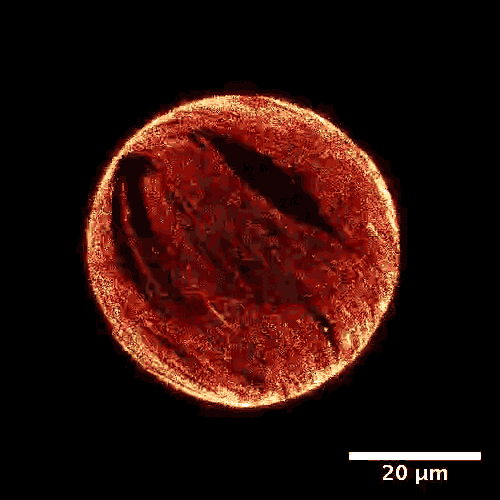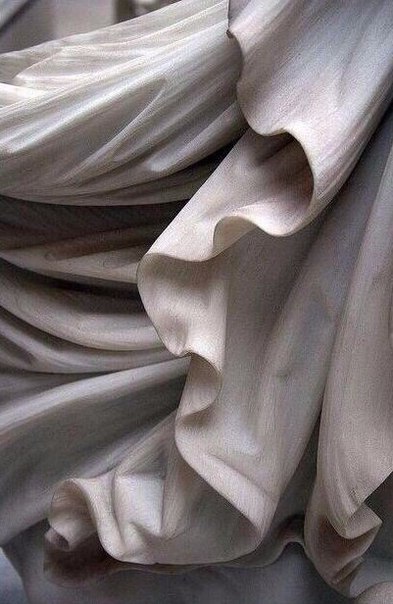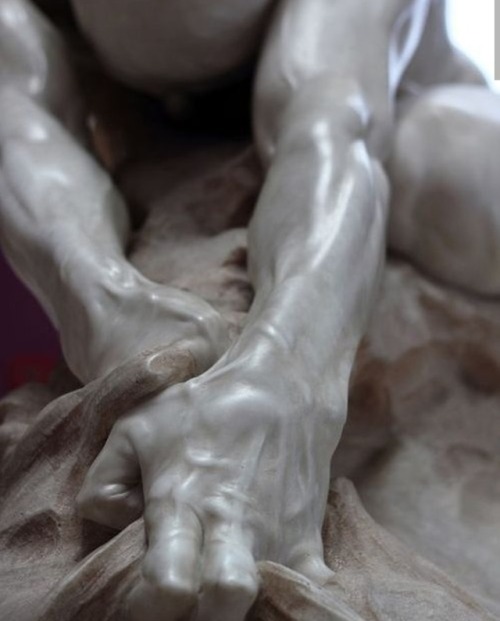Jupiter Is Strange For A Number Of Reasons. It’s The Biggest Planet In Our Solar System, Of Course.
Jupiter is strange for a number of reasons. It’s the biggest planet in our Solar System, of course. It harbors perhaps the most intense radiation environments. And, according to a new study, it has a magnetic field unlike that of any other known planet.
NASA’s Juno orbiter, a basketball court-sized spacecraft, is observing the gas giant as it circles the planet at varying distances. Scientists recently mapped Jupiter’s magnetic field at four depths, and noticed a strange hemispheric dichotomy: The northern hemisphere’s magnetic field was nothing like the southern hemisphere’s.
“It’s a baffling puzzle,” the study’s first author, Harvard Ph.D student Kimberly Moore, told Gizmodo. “Why is it so complicated in the northern hemisphere but so simple in the southern hemisphere?”
Continue Reading.
More Posts from Just-looking-for-some-science and Others

Fundamentals of Applied Electromagnetics 7th Edition
Great book by Fawwaz T. Ulaby and Umberto Ravaioli




Synthetic Cells Move On Their Own
What look like animated illustrations that could easily spring from a child’s imagination are actually newly unveiled artificial cells under a microscope.
Biophysicists at Germany’s Technical University of Munich along with an international team developed simple self-propelled biomachines in a quest to create cell models that display biomechanical functions.
The researchers say their work represents the first time a movable cytoskeleton membrane has been fabricated.
Keep reading
Farewell online privacy

Scientists have found new evidence confirming that turtles once lived without shells.
The almost-complete fossil dates back 228 million years and is bigger than a double bed.
It was discovered in the Guizhou province of south west China
Dr Nicholas Fraser, keeper of natural sciences at the National Museum of Scotland in Edinburgh, said: “It looked like a turtle but then lacked everything of the shell underneath and also the one on top.”
“It has the scaffolding in place for the shell to go on to but it doesn’t have the shell.”
Continue Reading.
Do you ever think about how sperm don’t work right at body temperature and that’s why males have external testicles? Design-wise that is such a huge risk to take. Your most important organ is swinging free outside your body, vulnerable to injury or attack. All because one (1) type of cell, your fucking gametes for christ’s sake, cannot function at the normal body temperature of the organism they belong to. What the fuck. I never want to hear a man try and say females are biologically inferior ever again.
What Science is Launching to Space?

The tenth SpaceX cargo resupply mission launched to the International Space Station on Feb. 18, and is carrying science ranging from protein crystal growth studies to Earth science payloads. Here’s a rundown of some of the highlights heading to the orbiting laboratory.

The CASIS PCG 5 investigation will crystallize a human monoclonal antibody, developed by Merck Research Labs, that is currently undergoing clinical trials for the treatment of immunological disease. Results from this investigation have the potential to improve the way monoclonal antibody treatments are administered on Earth.

Without proteins, the human body would be unable to repair, regulate or protect itself. Crystallizing proteins provides better views of their structure, which helps scientists to better understand how they function. Often times, proteins crystallized in microgravity are of higher quality than those crystallized on Earth. LMM Biophysics 1 explores that phenomena by examining the movement of single protein molecules in microgravity. Once scientists understand how these proteins function, they can be used to design new drugs that interact with the protein in specific ways and fight disease.

Much like LMM Biophysics 1, LMM Biophysics 3 aims to use crystallography to examine molecules that are too small to be seen under a microscope, in order to best predict what types of drugs will interact best with certain kinds of proteins. LMM Biophysics 3 will look specifically into which types of crystals thrive and benefit from growth in microgravity, where Earth’s gravity won’t interfere with their formation. Currently, the success rate is poor for crystals grown even in the best of laboratories. High quality, space-grown crystals could improve research for a wide range of diseases, as well as microgravity-related problems such as radiation damage, bone loss and muscle atrophy.


Nanobiosym Predictive Pathogen Mutation Study (Nanobiosym Genes) will analyze two strains of bacterial mutations aboard the station, providing data that may be helpful in refining models of drug resistance and support the development of better medicines to counteract the resistant strains.

During the Microgravity Expanded Stem Cells investigation, crew members will observe cell growth and morphological characteristics in microgravity and analyze gene expression profiles of cells grown on the station. This information will provide insight into how human cancers start and spread, which aids in the development of prevention and treatment plans. Results from this investigation could lead to the treatment of disease and injury in space, as well as provide a way to improve stem cell production for human therapy on Earth.

The Lightning Imaging Sensor will measure the amount, rate and energy of lightning as it strikes around the world. Understanding the processes that cause lightning and the connections between lightning and subsequent severe weather events is a key to improving weather predictions and saving life and property.

From the vantage of the station, the LIS instrument will sample lightning over a wider geographical area than any previous sensor.

Future robotic spacecraft will need advanced autopilot systems to help them safely navigate and rendezvous with other objects, as they will be operating thousands of miles from Earth.

The Raven (STP-H5 Raven) studies a real-time spacecraft navigation system that provides the eyes and intelligence to see a target and steer toward it safely. Research from Raven can be applied toward unmanned vehicles both on Earth and in space, including potential use for systems in NASA’s future human deep space exploration.

SAGE III will measure stratospheric ozone, aerosols, and other trace gases by locking onto the sun or moon and scanning a thin profile of Earth’s atmosphere.

These measurements will allow national and international leaders to make informed policy decisions regarding the protection and preservation of Earth’s ozone layer. Ozone in the atmosphere protects Earth’s inhabitants, including humans, plants and animals, from harmful radiation from the sun, which can cause long-term problems such as cataracts, cancer and reduced crop yield.

Tissue Regeneration-Bone Defect (Rodent Research-4) a U.S. National Laboratory investigation sponsored by the Center for the Advancement of Science in Space (CASIS) and the U.S. Army Medical Research and Materiel Command, studies what prevents other vertebrates such as rodents and humans from re-growing lost bone and tissue, and how microgravity conditions impact the process.

Results will provide a new understanding of the biological reasons behind a human’s inability to grow a lost limb at the wound site, and could lead to new treatment options for the more than 30% of the patient.
Make sure to follow us on Tumblr for your regular dose of space: http://nasa.tumblr.com










“So this is the composition by % of an average humans blood. Sadly there’s no such thing as an average person so this varies a lot and creates problems.”
— Biophysics professor, talking about haemodialysis biophysics,

30,000 year old flower revived.
Scientists have resurrected a flower from plant tissues found frozen in Siberian permafrost, thought to be 30,000-32,000 years old. The new Silene stenophylla is healthy and fertile, and producing viable seeds.
The experiment has excited many because it proves that material trapped in the permafrost is recoverable and usable - scientists have been working to recover other species of plant and animal life from the same area, such as the woolly mammoth.
-
 corvuseli liked this · 5 years ago
corvuseli liked this · 5 years ago -
 replicant1955 liked this · 6 years ago
replicant1955 liked this · 6 years ago -
 mizube-japan liked this · 6 years ago
mizube-japan liked this · 6 years ago -
 mr-sigh liked this · 6 years ago
mr-sigh liked this · 6 years ago -
 boringbeehive liked this · 6 years ago
boringbeehive liked this · 6 years ago -
 gracefullysaint liked this · 6 years ago
gracefullysaint liked this · 6 years ago -
 sushidynasty liked this · 6 years ago
sushidynasty liked this · 6 years ago -
 windwardstar reblogged this · 6 years ago
windwardstar reblogged this · 6 years ago -
 nezdravo liked this · 6 years ago
nezdravo liked this · 6 years ago -
 wibblywobblygenderywendery reblogged this · 6 years ago
wibblywobblygenderywendery reblogged this · 6 years ago -
 dreamypaleblue reblogged this · 6 years ago
dreamypaleblue reblogged this · 6 years ago -
 fractalabomination liked this · 6 years ago
fractalabomination liked this · 6 years ago -
 calicotomcat reblogged this · 6 years ago
calicotomcat reblogged this · 6 years ago -
 grayelliot liked this · 6 years ago
grayelliot liked this · 6 years ago -
 thatqueerweirdo liked this · 6 years ago
thatqueerweirdo liked this · 6 years ago -
 mosscosmos reblogged this · 6 years ago
mosscosmos reblogged this · 6 years ago -
 excluson liked this · 6 years ago
excluson liked this · 6 years ago -
 chocolateismynemesis reblogged this · 6 years ago
chocolateismynemesis reblogged this · 6 years ago -
 bitsofsciencelife reblogged this · 6 years ago
bitsofsciencelife reblogged this · 6 years ago -
 bobtalk reblogged this · 6 years ago
bobtalk reblogged this · 6 years ago -
 bobtalk liked this · 6 years ago
bobtalk liked this · 6 years ago -
 eriktheswift reblogged this · 6 years ago
eriktheswift reblogged this · 6 years ago -
 codeslinga liked this · 6 years ago
codeslinga liked this · 6 years ago -
 climate-changing liked this · 6 years ago
climate-changing liked this · 6 years ago -
 wozziebear reblogged this · 6 years ago
wozziebear reblogged this · 6 years ago -
 argider reblogged this · 6 years ago
argider reblogged this · 6 years ago -
 argider liked this · 6 years ago
argider liked this · 6 years ago -
 i-regret-my-old-url liked this · 6 years ago
i-regret-my-old-url liked this · 6 years ago -
 bhen2 reblogged this · 6 years ago
bhen2 reblogged this · 6 years ago -
 sciencenerd4-blog liked this · 6 years ago
sciencenerd4-blog liked this · 6 years ago -
 polymathmadness reblogged this · 6 years ago
polymathmadness reblogged this · 6 years ago -
 holycanolibatman liked this · 6 years ago
holycanolibatman liked this · 6 years ago -
 winchesterfamilyfeud liked this · 6 years ago
winchesterfamilyfeud liked this · 6 years ago -
 cowboyogre-blog liked this · 6 years ago
cowboyogre-blog liked this · 6 years ago -
 maccrazed reblogged this · 6 years ago
maccrazed reblogged this · 6 years ago -
 maccrazed liked this · 6 years ago
maccrazed liked this · 6 years ago -
 a-cure-for-sentience liked this · 6 years ago
a-cure-for-sentience liked this · 6 years ago -
 gloriousinternetpaper reblogged this · 6 years ago
gloriousinternetpaper reblogged this · 6 years ago -
 gloriousinternetpaper liked this · 6 years ago
gloriousinternetpaper liked this · 6 years ago -
 radicalgremlin liked this · 6 years ago
radicalgremlin liked this · 6 years ago
Some of us may not like science, but we all desperately need it
16 posts
